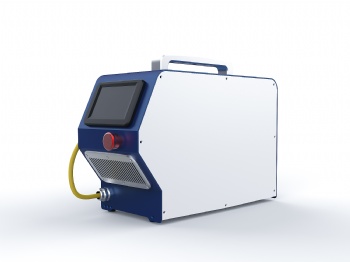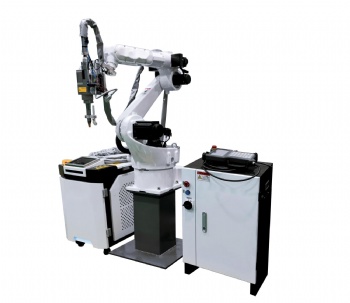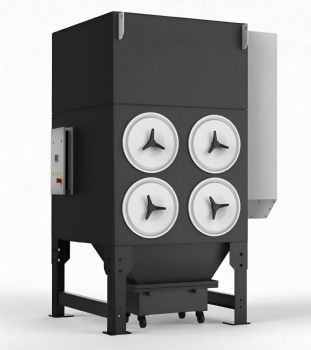News
In-depth interpretation: after 60,000 watts, where are laser cutting machines and fiber lasers going?
At the end of March 2023, the fiber laser cutting machine with a power of up to 60,000 watts was released shockingly, attracting the attention of many people in the industry. On the day of the release of 60,000 watts, Wu Rangda, president of Penta Laser Group, made it clear: "The development of the power of laser cutting machines to 60,000 watts can come to an end, because the current 60,000 watts of laser cutting machines have the ability to completely replace plasma, The ability of flame cutting. If the laser power is further increased, the contribution to cutting efficiency and cutting ability is not so obvious, but it will further increase the user's cost and energy consumption."
As soon as this point of view came out, it triggered a big discussion in the industry about the application of high-power lasers: Is 60,000 watts a gimmick greater than reality, or is it a magic weapon to create a new era of thick plate processing? How should the laser industry develop after 60,000 watts?
Will 60,000 watts be the ceiling of laser cutting machine power?
There is no doubt that the 60,000-watt laser has significantly increased the thickness limit of thick plate processing, breaking the "laser forbidden area" that cannot be stably mass-produced above 100mm, making it possible to process ultra-thick materials such as steel ingots and iron ingots, and the cutting range has exceeded Flame cutting, plasma cutting, etc., have the strength to completely replace traditional thick plate processing techniques such as plasma, flame, and sawing machines. 60,000 watts is of great significance to technological innovation in the field of thick plate processing.
In the field of 10-30mm medium and thick plate processing, 60,000 watts redefines the efficiency of laser cutting. In the past, 20mm and 30mm carbon steel were relatively difficult to process thick plates, but now 60,000 watts can easily cut 20mm carbon steel plates. It can reach 11m/min, and the cutting speed of 30mm carbon steel plate can reach 5m/min, which is much faster than plasma, flame and other cutting methods. Compared with the past 20kW and 30kW laser cutting, it is also very significantly improved. Therefore, the 60,000-watt laser can greatly reduce the labor cost and maintenance cost of users in this power range, and it is also of great significance to the improvement of quality and efficiency in the field of medium and thick plates.
It can be said that the 60,000-watt laser cutting machine is the clarion call for a comprehensive replacement of high-pollution and low-efficiency processing techniques under the background of the "dual carbon" economy advocated by the country. If 80,000 watts and 100,000 watts of laser cutting machines appear in the future, what impact will it have on the laser industry?
It is undeniable that the increase in power has brought about an increase in processing efficiency and processing thickness. Sufficiently high power is the basis for replacing high-pollution and low-efficiency processes; but if you blindly pursue higher power, only the internal parts of laser processing Competition - under the main theme of carbon reduction, increasing carbon against the trend (increasing power and increasing energy consumption) can indeed make medium and thick plates cut faster. It is not a dream to reach 10m/min for 30mm carbon steel - this kind of inward rolling The overall economic benefits brought by the efficiency improvement to the industrial chain may not be comparable to the resources invested in the pursuit of higher power.
Of course, this does not mean that 60,000 watts is the upper limit of laser application power. In nuclear industry applications, including laser remote cutting, high-power thick plate welding, laser cleaning, etc., there is still a demand for higher laser power. However, in the blanking process of metal processing, higher power may not be of much benefit to the development of the industry.
The future of laser cutting equipment - not stacking power but intelligent
If the power ceiling for sheet metal cutting is already here, where should the future of the laser cutting industry go? For this problem, we might as well look at how domestic and foreign laser giants are deployed.
Compared with the power competition that domestic companies are keen on, foreign companies have no choice to follow up from the very beginning. On a certain level, this is of course one of the epitome of domestic technological progress and getting rid of foreign stuck necks. However, when China is constantly pursuing higher power, international laser giants such as Trumpf and Bystronic have been thinking about how to realize laser equipment. Intelligent, providing a one-stop complete solution for enterprise users.
In 2018, TRUMPF established the Smart Factory Solution smart factory solution team. The team is composed of more than 30 experts with experience in different fields, and customizes exclusive smart upgrade solutions for multi-industry customers with individual needs to solve problems that cannot be solved conventionally.
The Swiss Bystronic Group has also been firmly advancing in the direction of digitalization. A few years ago, the parent company of Bystronic Group began to divest other non-Bystronic businesses one after another, and acquired a large number of companies related to sheet metal automation around the world, and established Automation Technology Co., Ltd. in China, established a software business department, and established Will gradually transfer the entire sheet metal processing software system to China.
Coincidentally, domestic leading laser companies have actually started an intelligent layout early. As early as 2012-2013, Han's Laser has begun to transform into intelligent manufacturing, and has determined the solution of "laser technology + robot + automation" as the company's long-term strategy for 10-20 years.
HGLASER also started to proactively lay out the overall solution for intelligent manufacturing very early. At present, it has entered the benchmark customers of six major industries including construction machinery, rail transit, ship bridges, and construction, and has built a series of model factories and lighthouse factories for customers. , including "large-scale flexible intelligent material preparation workshop", "large-scale flexible steel plate material preparation intelligent 'black light' production line", "5G-based full-process intelligent manufacturing plant for steel structure bridges", etc.
Diversified exploration of lasers - high power is not the only solution
And as another core protagonist of the 60,000-watt laser cutting machine released this time, MAX Laser has also carried out multi-line layout in addition to high power. In the past few years, Max Laser has achieved great success in the domestic market, and played an important guiding role in the development of the 10,000-watt laser application market. Landmark events such as the release of Taiwan 60kW.
In 2021, Max laser will propose an "integrated 10,000-watt cutting solution", that is, the "3-in-1 10,000-watt" solution, which will organically integrate the 10,000-watt fiber laser, the 10,000-watt laser cutting head and the 10,000-watt control system to achieve The cutting efficiency is improved under the same power. On this basis, Maxlaser combined the advantages of high power and high brightness into one, and took the lead in developing a 10,000-watt high-brightness three-in-one laser with a core diameter of 50 μm and a high-brightness 50kW three-in-one laser.
On the issue of whether higher power lasers will be released in the future, Max Laser said: "In the past few years, Max Laser has relied on one high (high brightness of pump light output, high brightness of active fiber core), two small (Small core diameter of pump source light, small core diameter of signal light), triple-clad (original patent, carrying 10,000 watts of pump light) technology route, driving the explosive growth of the domestic 10,000 watts laser market, and also eating 10,000 watts The dividend from the market explosion ranks in the forefront of the industry in the market share of 10,000 watts of lasers.
Judging from the current technological level, 60,000 watts is enough to cover all plasma replacement needs, and it is not economically cost-effective to develop power further, unless new major technological changes occur. Of course, if users need it, we can provide a higher power light source, but we will not push it up blindly.
In addition to high brightness, there are also rich technical routes. In the past few years, Raycus, the leading enterprise of domestic fiber lasers, has launched high-power fiber lasers with optical gates that can be split, welding version lasers with ring spot/adjustable spot, high-power pulse lasers suitable for cleaning, etc. . Under the guidance of Banner series lasers, Raycus aims at high-end applications and strives to achieve domestic substitution in market segments that are still monopolized by imports.
In addition to actively consolidating the advantages of its own MOPA pulsed fiber laser, JPT has adjusted the research and development direction of continuous fiber lasers, optimized the team and turned to welding applications, and customized and developed ring-shaped spot lasers according to the actual welding needs of power battery customers. , can better control problems such as metal spatter during laser welding, and further optimize the welding effect.
Summarize
Through the layout of several industry representatives selected above, we can clearly see that both equipment integrators and core light source companies have found a new development path beyond simply increasing power, and the entire industry is getting together. has become history.
Categories
Contact Us
- +86-13724554746
- +86-15291096679
- alex@dapengcnc.cn
- +86-13724554746




